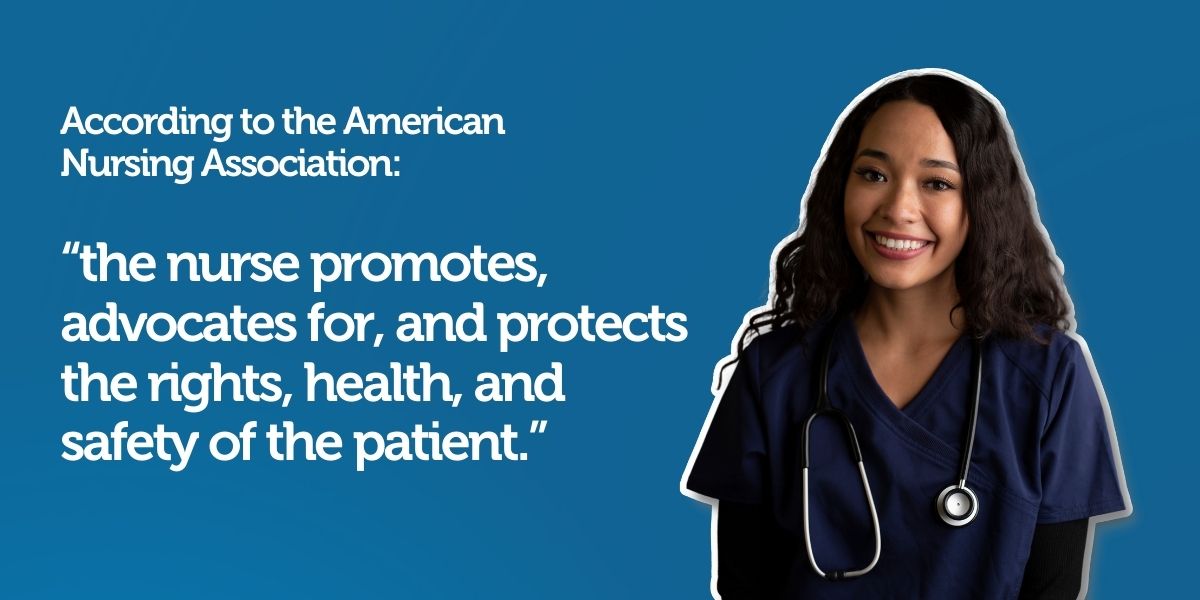

Patient advocacy is an essential element of nursing in English-speaking countries, like the US, UK and Australia. When nurses advocate for their patients, they can help protect patients by being their voice and improving their quality of care.
It’s a core responsibility and key part of patient-centred care. But to do this, nurses need confidence in their communication skills to discuss care with doctors, patients and medical specialists.
Why is patient advocacy so important?
Vulnerable patients put their faith and trust in healthcare professionals to deliver medical assistance that meets their needs. Yet, in complex health systems, patients can lack the knowledge or the capacity to engage in the medical process. It’s the nurse’s role to advocate for the patient’s rights, allowing them to take part in their own provision of care.
It is so important that, when nurses do not advocate, it can have a negative effect on patient safety. A 2011 study found that infections acquired while in hospital increased due to the inability of nursing staff to advocate for their rights.
And the cost of poor healthcare is high. In 2018-19, the English health system paid almost £2.4bn in medical negligence claims. Yet, much of this could have been mitigated through patient advocacy.
So, what is patient advocacy?
Patient advocacy centres on promoting patient safety and quality care. Many nursing Associations have embedded advocacy into their codes and ethics.
The American Nursing Association, for instance, includes patient advocacy in its code of ethics:
“the nurse promotes, advocates for, and protects the rights, health, and safety of the patient.â€
The Nursing and Midwifery Council also has provisions for advocacy in its code of conduct:
“act as an advocate for the vulnerable, challenging poor practice and discriminatory attitudes and behaviour relating to their careâ€
While advocacy sits within a wider ethics matrix, how nurses advocate for their patients can come in many forms.
In some cases advocacy includes empowering patients through empathy and counselling patients though an objective but friendly approach. In some cases, it also means challenging the decisions of doctors and other specialists who may not put the patients’ rights at the centre of their decisions.
In a 2011 example in Australia, a nurse was found to be at fault when she didn’t query the anaesthetist after she observed that the patient was drowsy but responsive. This example shows that it is the nurses responsibility to advocate for the patient by alerting medical practitioners to their observations.
At times like this, nurses can find it hard to advocate for their patients if they come from healthcare systems with strict hierarchies.

What are the challenges to effective patient advocacy?
Nurses moving to English speaking countries will find themselves in multidisciplinary teams, which may differ from their home country. Teams tend to be made up of a range of healthcare professionals including, nurses, doctors and specialists. Within these working groups each member has a specific role and responsibilities.
Nurses are required to express professional opinions and share their medical knowledge as well as engage with critical thinking. Alongside these, nurses will also be expected to make independent decisions while working collaboratively with other nurses and doctors.
In some cases, this means making decisions that are independent of doctors, working closely with patients to craft care plans and discussing any concerns they might have.
At these times, advocating for the patient becomes critical.
How can OET help?
Preparing for OET helps nurses strengthen their communications skills by focusing their attention on key functional language they will need for their work, for example, to provide reassurance, give advice, encourage compliance, offer empathy.
The roleplayer cards used for practice materials exemplify typical conversations nurses have with their patients or relatives of their patients every day. For those moving to English speaking countries, the card contents also highlights the autonomy a nurse will be expected to demonstrate in such conversations giving them a chance to practise before they are called to communicate with an actual patient. Support is given on the cards so that those less familiar with such autonomy are not disadvantaged in the test while demonstrating best practice communication when discussing patient care.
Practice leads to confidence. Many OET candidates report that their results help them feel ready to face whatever they will be called on to communicate to their patients, leading to an increase in self-esteem and self-worth to their employer.